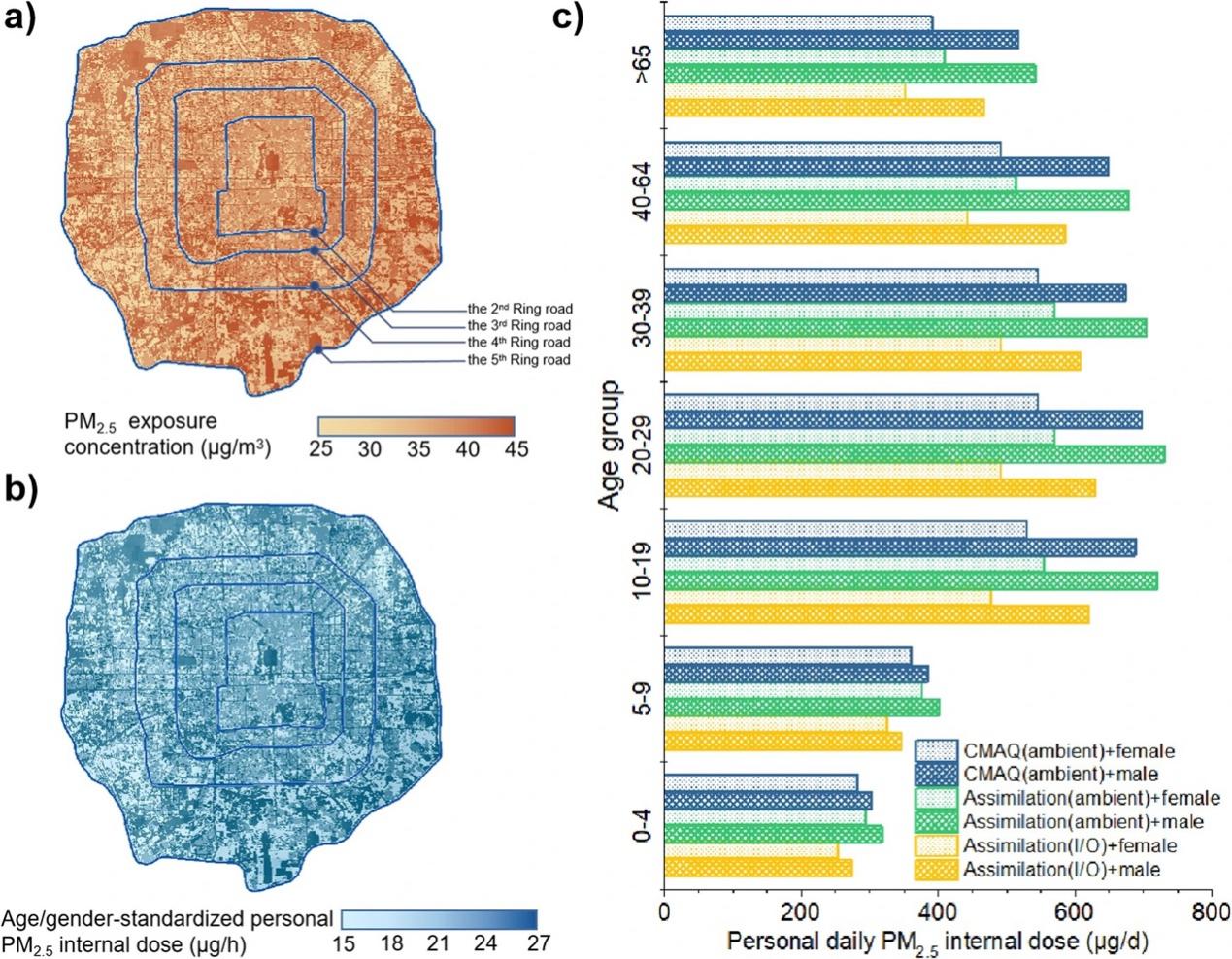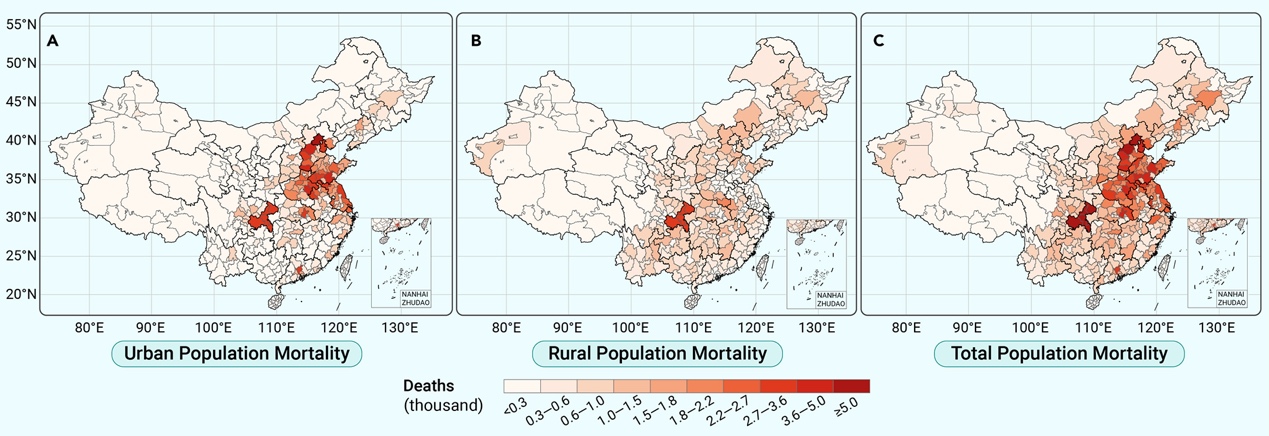On December 12, 2023, the team led by Academician He Kebin and Professor Liu Huan from the School of Environment, Tsinghua University has collaborated with scholars from several internationally renowned universities in the UK in an international cooperation project. They have utilized machine learning algorithms to advance the development of atmospheric pollutant distribution datasets, enabling them to cover a longer time span and achieve higher spatial resolution. And they have conducted a refined assessment of exposure heterogeneity and disease burden from the perspectives of individual activities and population migrations.
Researchers have conducted a refined exposure assessment for urban populations focusing on PM2.5. By integrating multi-source data with machine learning algorithms, they have established a PM2.5 concentration field for Beijing at street-scale (with 30-m resolution), and examined exposure levels in both indoor and outdoor micro-environments. This study has addressed the shortcomings of existing medium-scale chemical transport modelling in depicting the heterogeneity of population exposure. The traditional exposure assessment method solely based on ambient concentration level has been refined to the level of internal exposure and thus it can reveal significant exposure differences among subgroups of ages and genders. The research findings, titled "Ultra-high-resolution mapping of ambient fine particulate matter to estimate human exposure in Beijing", have been published online in the journal Communications Earth & Environment, a publication of the Springer Nature Group.
This achievement is based on the international cooperation project titled "Pathways to Equitable Healthy Cities (Pathways)". The project is a global partnership aimed at improving public health, enhancing health equality, and ensuring environmental sustainability in cities worldwide, through collaboration with policymakers and civil organizations from five countries/cities. Professor Liu Huan and Academician He Kebin from Tsinghua University are the co-corresponding authors of the paper. The co-first authors are Wang Yongyue, a 2020-level doctoral student from the School of Environment, and Li Qiwei, a master's graduate from the class of 2021. Associate Professor Long Ying, Professor Yang Xudong, and Professor Mao Qizhi from the School of Architecture at Tsinghua University provided crucial data support for micro-environment identification and exposure. Professor Liu Jing and Dr. Deng Qiuju from Beijing Anzhen Hospital offered guidance in health risk assessment. In addition, Professor Majid Ezzati from Imperial College London and Professor Jill Baumgartner from McGill University participated in the entire research process. Professor Zhao Bin from the School of Architecture at Tsinghua University also participated in discussions and provided guidance.

Figure 1. Population exposure characteristics within the 5th Ring Road of Beijing
a) Distribution of indoor and outdoor PM2.5 exposure concentrations; b) Age/gender-standardized personal hourly PM2.5 internal exposure distribution; c) Average daily PM2.5 internal exposure by age and gender subgroups
Additionally, researchers have conducted an exposure assessment study on ozone at the national scale, focusing on the urbanization process. This study employed deep learning algorithms and integrated multiple well-developed ozone concentration datasets, and meticulously described the spatial distribution differences and temporal trends of ambient ozone concentrations between urban and rural areas from 1990 to 2019. By incorporating the latest epidemiological evidence based on cohort studies, the research deeply analyzed the relationship between population ozone exposure and the excess burden of cardiopulmonary mortality from the perspective of population migration during the urbanization wave in China over the past 30 years.

Figure 2. Distribution of excess mortality attributable to ozone-related cardiopulmonary diseases (cardiovascular and chronic obstructive pulmonary disease) in 2019
A. Urban population mortality; B. Rural population mortality; C. Total Population mortality
The research findings, titled "Antagonism between Ambient Ozone Increase and Urbanization-Oriented Population Migration on Chinese Cardiopulmonary Mortality," have been published online in the journal The Innovation, a publication of Cell Press.
Professor Liu Huan from Tsinghua University, Professor Guo Yuming from Monash University, and Professor Alexander Thomas Archibald from the Department of Chemistry at the University of Cambridge are the co-corresponding authors of the paper. The co-first authors are Dr. Sun Haitong from the University of Cambridge and Zhao Junchao, a 2019-level doctoral candidate from the School of Environment, Tsinghua University. This research was supported by Professor Liu Huan's Newton Advanced Fellowships Program. During Zhao Junchao's visit as a doctoral scholar at the University of Cambridge, the collaborative work was jointly completed by both parties.
Paper links:
https://www.nature.com/articles/s43247-023-01119-3
https://www.cell.com/the-innovation/fulltext/S2666-6758(23)00145-5





